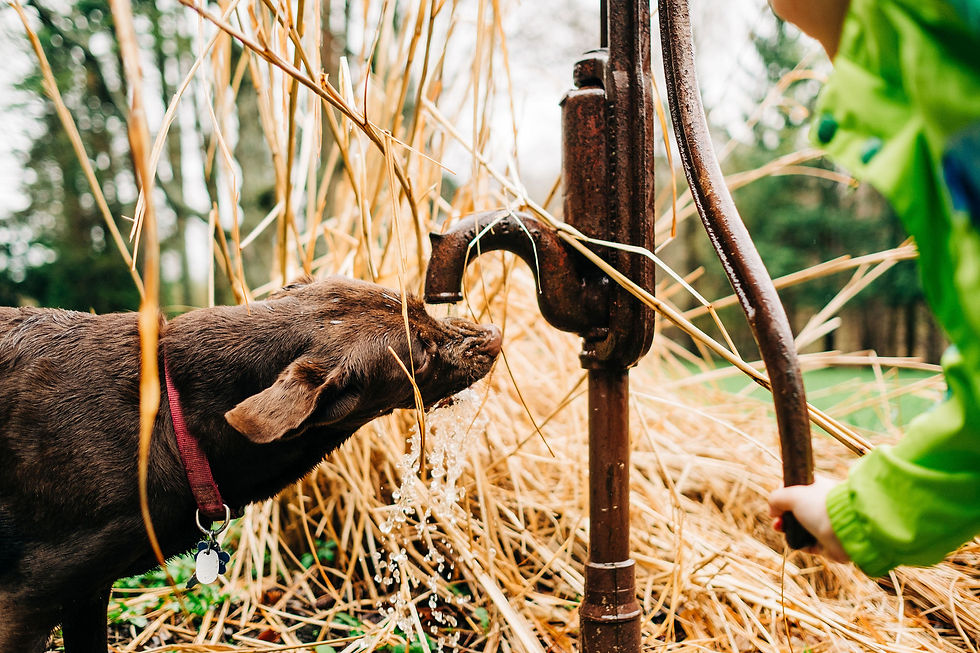Layers by Katie Schmitt
- Angie Warmington

- May 16, 2021
- 4 min read
Hi, I’m Kate! I’m a WNY wife, mama of two wildlings, and lover of plants and animals. My husband and I live in a small rural town, where we have found peace and happiness on a one acre plot. Included in our beautiful, crazy family are two dogs, two cats, too many plants to count, and a flock of ducks and chickens. Life is chaotic in the BEST of ways!

I am a hobby(ish) photographer. While I do frequently take on clients, my heart lies in documenting the day to day lives of my own family, and I’m slowly working on rebranding as a lifestyle/documentary photographer for client work, too. There’s powerful magic in seeing others as they truly are - asking others to bare intimate aspects of their lives requires trust founded in relationships. Projects that have helped me strengthen my photography include participating in mentorships and workshops, themed social media loops, and undertaking a Project 365. Shooting every day has made a world of difference.

I’ve been honored with the task of discussing layers with you today, and how I incorporate layers into my work. I’m excited to share my thoughts with you, and hope you find them helpful and worthwhile!

What are Layers?
Layering is a photographic technique that involves creating a distinct foreground, background, and subject when composing an image. Layering adds compositional interest, and can also help with storytelling and depth. My favorite way to use layering is by incorporating environmental elements that already exist in the scene.

As a documentary photographer, there are a few questions I ask myself when composing a scene.
What is the overall mood or story that I want to tell?
What environmental aspects add to the scene?
What environmental aspects detract from the scene?
How does the subject interact with the people/objects around them? What feelings do those interactions lend to the scene?
After I remove any distracting or unnecessary items from the frame, I analyze items that I believe add to the scene. I look for ways to incorporate those items into the frame, usually as foreground or background details.

In the following image of my daughter and grandmother, kitchen details are used to enhance the scene and create mood. Wood paneling and cupboards add warmth to the background, while the counters and backsplash in the foreground create leading lines that draw your eye to the subjects. Other items present in the scene include a vase of daffodils and fruit bowl in the background, and a wood canister and stovetop in the foreground. Each of these items enhances the feeling of coziness and “home” present in the image. While the portrait would be beautiful on its own, it is made infinitely better by the added elements and layers.

Another image that incorporates layers is this one of my son and his canine friend, Lucy, playing at a water pump. The primary focus of the image lies on the dog, making her the subject. At the foreground is my son’s arm working the pump, slightly out of focus due to a narrow depth of field and its position in relation to the subject. Tall grasses and trees in the background create a pleasing bokeh that pushes the eye back to the subject.

Layering in Still Life and Flat Lay Imagery
Still life and creating flay lays are another genre of photography that I enjoy. I recently joined a group focused on food photography, and it has really forced me to step out of my comfort zone and learn new techniques. This type of imagery is often more stylized than documentary, and I like to incorporate layers to add detail and intention to the frame.

Some ways that you can incorporate layers into still life imagery include:
Adding texture through the use of textiles and natural fibers
Pulling in props related to the scene
Incorporating plants and greenery for a “natural” feel

When setting your scene, don’t be afraid to move things around as needed. Experiment with different perspectives and compositions.

Light as a Layer
I am a big fan of incorporating sun flares and occasional haze into my images. Used as a background layer, light can create a dreamy, ethereal feel in your images. Direct light behind your subject can also be used to create a silhouette effect, allowing your subject to stand distinctly forward of any background elements.




A Technical Note
Aperture and depth of field play a large role when creating cohesive layers. Shooting with a wide aperture (i.e. f/1.8) will create a narrow focal plane in your image. Foreground and background layers will be soft and slightly out of focus. Closing down your aperture (i.e. f/5.6) will allow more objects in your image to remain in focus.

As an artist, it is up to you to decide where and when different aperture values work to your advantage. If you are looking to create a soft, dreamy feel, a wide aperture will help accomplish that. If you are hoping for a raw, gritty image, opt for closing down your aperture a bit.

I hope the way I approach layers in my work has inspired you to experiment, or even made the concept of layering less intimidating. It really is a lot of fun!






Thanks so much for sharing these tips Katie. Such great advice. Would you mind sharing which Food photography group you have joined? Many thanks 😊